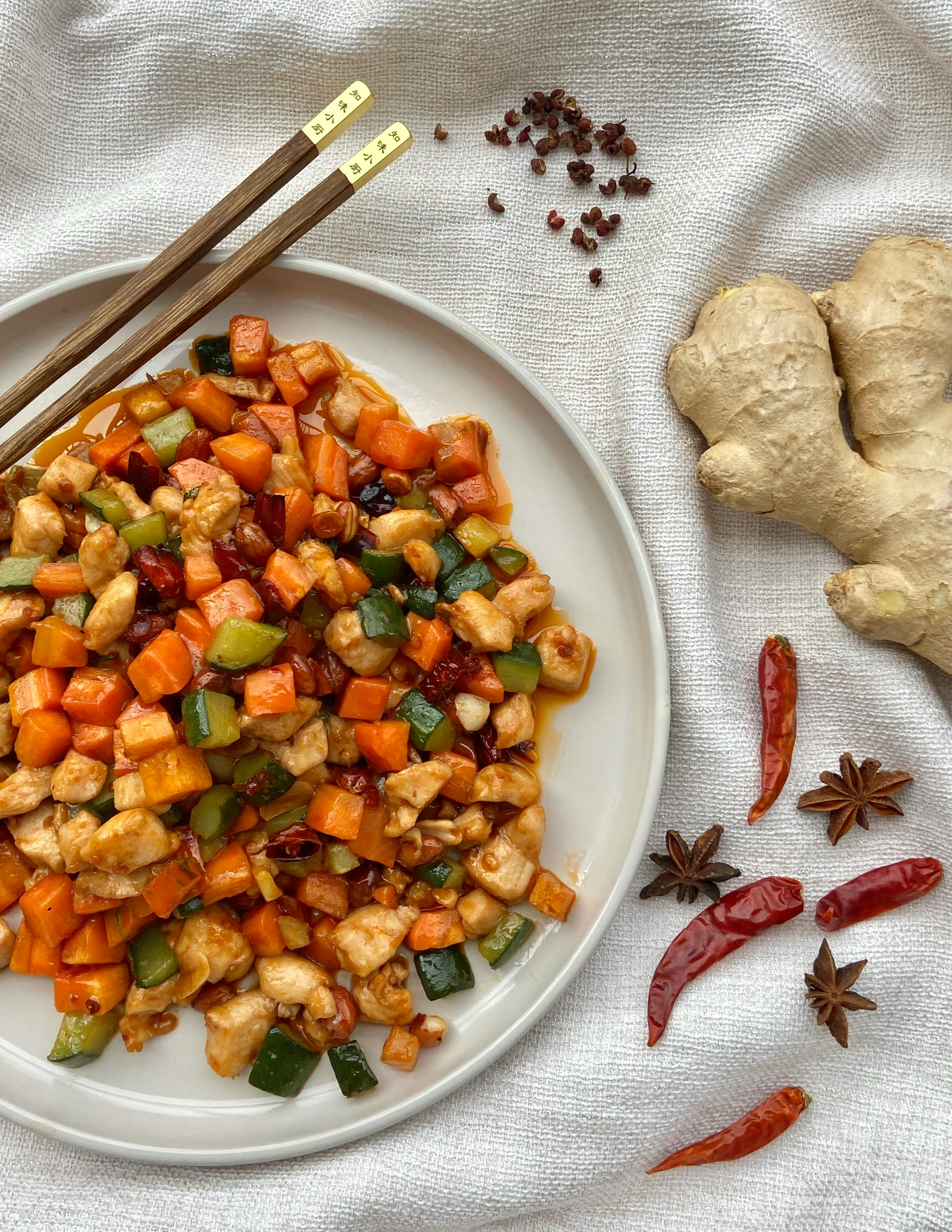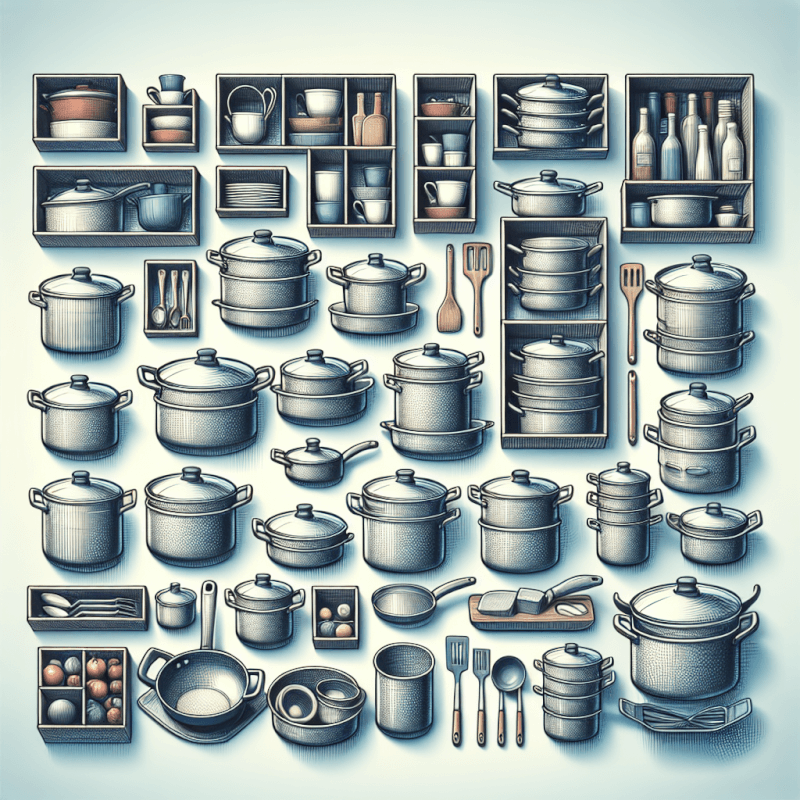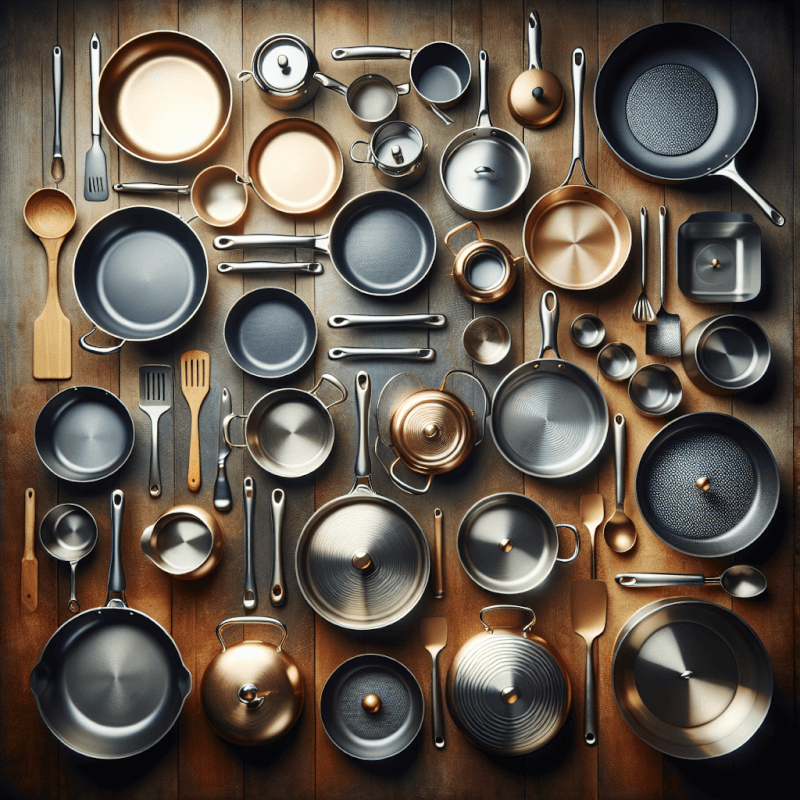Are you tired of struggling with ill-fitting pots and pans that hinder your culinary adventures? If so, fret no more! In this article, we will guide you through the process of choosing the perfect sizes of pots and pans for your cooking needs. Whether you’re simmering a hearty stew or whipping up a delicate sauce, understanding which size to use can make all the difference in achieving culinary perfection. So, let’s embark on this quest together and unlock the secrets to selecting the right pots and pans that will elevate your cooking to new heights!

Consider Your Cooking Style and Needs
Assess Your Cooking Habits
Before selecting the right size of pots and pans for your cooking needs, it’s important to assess your cooking habits. Ask yourself questions such as: How often do I cook? Do I enjoy preparing elaborate meals or do I prefer quick and easy recipes? Understanding your cooking habits will help you determine the appropriate size and quantity of cookware to invest in.
Determine the Frequency of Cooking
Consider how frequently you cook. If you cook regularly, you may benefit from having a larger collection of pots and pans in different sizes. On the other hand, if you only cook occasionally, a smaller set of cookware may be sufficient. Determining the frequency of your cooking will give you an idea of how much cookware you need to have on hand.
Consider the Types of Dishes You Prepare
Think about the types of dishes you often prepare. Are you someone who enjoys making soups and stews, which require larger pots? Do you frequently make stir-fries or sautéed dishes that require a spacious skillet? Understanding the types of dishes you typically prepare will help you determine the sizes of pots and pans that will be most useful in your kitchen.
Take into Account the Sizes of Your Family or Guests
Lastly, consider the sizes of your family or the number of guests you typically cook for. If you have a large family or frequently entertain guests, you may need larger pots and pans to accommodate larger portions. On the other hand, if you live alone or cook for a small number of people, smaller-sized cookware may be more suitable. Taking into account the sizes of your family or guests will ensure that you have the right amount of cookware to meet your needs.
Understand Different Pot and Pan Sizes
Learn About Common Pot and Pan Sizes
Before diving into the world of cookware, it’s important to familiarize yourself with the common sizes of pots and pans that are available in the market. Common pot sizes range from small saucepans (around 1 quart) to large stockpots (up to 12 quarts). Skillets and frying pans come in various sizes as well, with the most common being 8 inches to 12 inches in diameter. By understanding these sizes, you can make more informed decisions when purchasing cookware.
Know the Standard Measurements
To ensure you choose the right size of pots and pans, it’s helpful to be familiar with standard measurements. Most cookware sizes are measured in quarts or inches in diameter. For example, a 2-quart saucepan typically has a diameter of around 7 to 8 inches. Understanding these standard measurements will make it easier for you to select cookware that meets your needs and fits well with your existing kitchen setup.
Familiarize Yourself with Industry Terminology
The world of cookware can be filled with industry terminology that may be confusing to newcomers. Familiarize yourself with terms like quart, pint, gallon, frying pan, sauté pan, and Dutch oven. Understanding these terms will help you navigate through product descriptions and choose the right sizes and types of pots and pans for your cooking needs.
Determine the Essential Pieces
Identify Must-Have Cookware
When choosing the right size of pots and pans, it’s important to start with the essentials. Identify the must-have cookware pieces that you use on a regular basis. This may include a medium-sized saucepan, a large skillet, a stockpot, and a small frying pan. By identifying these essential pieces, you can ensure that you have the right sizes to cover your basic cooking needs.
Consider Multipurpose Options
To maximize the use of your pots and pans, consider investing in multipurpose cookware. Some pots may come with interchangeable lids that allow you to use them as saucepans, sauté pans, or even stockpots. Likewise, some frying pans may have deeper sides, allowing them to be used as shallow pans for frying or deeper pans for sautéing. Choosing multipurpose options will help you minimize the number of cookware pieces you need without compromising functionality.
Evaluate Your Current Kitchen Tools
Take a look at your current collection of kitchen tools and utensils. Are there any special-purpose items that you use often? For example, if you frequently bake casseroles or lasagnas, a casserole dish with a lid may be a valuable addition to your cookware collection. Evaluating your current kitchen tools will help you identify any gaps or specific needs that can be fulfilled by selecting the right size of pots and pans.
Evaluate the Size of Your Stovetop Burners
Measure Your Burner Sizes
To select the right size of pots and pans, it’s important to measure the sizes of your stovetop burners. Most stovetops have burners of varying sizes, and knowing the dimensions of each burner will help you choose cookware that fits properly. Use a tape measure to determine the diameter of each burner, as well as the distance between burners if you plan to use multiple pots and pans simultaneously.
Check for Compatibility with Cookware
Once you have measured your burners, check for compatibility with the cookware you are considering. Some pots and pans may have bases that are too small or too large for your burners, resulting in uneven heating and inefficient cooking. Ensure that the cookware you choose has a base diameter that matches the size of your burners to achieve optimal heat distribution.
Consider the Maximum Heat Distribution
Keep in mind the maximum heat distribution of your burners when selecting the size of pots and pans. If your burners have different heat outputs, consider choosing cookware that can evenly distribute heat across varying temperatures. This will ensure that your food cooks evenly and consistently, regardless of the burner you use.

Balance Size and Versatility
Choose Cookware with Various Capacities
To cater to different cooking needs, it’s a good idea to choose pots and pans with various capacities. Having different sizes will allow you to cook small or large quantities of food as needed. For example, having a small saucepan for simmering sauces or heating leftovers, and a larger pot for boiling pasta or making soups, will provide you with more versatility in your cooking.
Opt for Adjustable or Stackable Options
If storage space is a concern, consider cookware that offers adjustable or stackable options. Some sets come with lids that fit multiple-sized pots and pans, allowing you to save storage space by nesting them together. Additionally, cookware with removable handles or collapsible designs can make storage more efficient when not in use.
Consider Combining Pot and Pan Sizes
To maximize versatility and reduce the number of cookware pieces you need, consider combining pot and pan sizes. Some pots may come with detachable handles, allowing them to be used as frying pans. Similarly, some frying pans may have a high-sided design, making them suitable for cooking stews and sauces. By selecting cookware that combines different sizes and functionalities, you can save on storage space while still having the necessary tools for various cooking tasks.
Think About Storage Space
Assess Available Kitchen Storage
When choosing the right size of pots and pans, it’s important to consider the amount of storage space available in your kitchen. If you have limited cabinet or drawer space, you may need to prioritize cookware that is compact or easy to stack. Assess your available kitchen storage and choose cookware that fits comfortably within your existing setup.
Consider Stackability or Nesting Feature
To make the most of your storage space, look for cookware that offers stackability or a nesting feature. This means that the pots and pans can be nested inside each other, with lids stacking neatly on top. This not only saves space but also helps you stay organized and easily access the cookware you need.
Evaluate Hanging or Wall-mounted Options
If you have minimal cabinet or drawer space, consider utilizing wall-mounted racks or hanging hooks to store your pots and pans. This not only creates additional storage space but also adds a decorative touch to your kitchen. There are various options available, from ceiling-mounted pot racks to wall-mounted grids with hooks, allowing you to display and access your cookware with ease.

Consider Material and Heat Conductivity
Explore Different Cookware Materials
When selecting the right size of pots and pans, it’s important to consider the materials they are made of. Common cookware materials include stainless steel, nonstick, cast iron, copper, and aluminum. Each material has its own properties and advantages, so it’s important to explore and understand them before making a decision. Consider factors such as heat conductivity, durability, and maintenance requirements when choosing the material that best suits your needs.
Understand Heat Conductivity of Materials
Heat conductivity is an important factor to consider when choosing cookware. Some materials, such as copper and aluminum, have excellent heat conductivity, distributing heat evenly and quickly. Others, like stainless steel or cast iron, may require more time to heat up but retain heat well. Understanding the heat conductivity of different materials will help you select cookware that suits your cooking style and preferences.
Factor in Maintenance and Longevity
Consider the maintenance requirements and longevity of the cookware material. Some materials, like stainless steel, are known for their durability and ease of maintenance. Others, such as copper or cast iron, may require more care and attention to prevent tarnishing or rusting. Think about your lifestyle and willingness to maintain the cookware when choosing the right material.
Don’t Forget about Handle Comfort
Test Handle Grip and Ergonomics
When selecting the size of pots and pans, don’t forget to consider handle comfort. Cookware with poorly designed or uncomfortable handles can make cooking a frustrating experience. Look for cookware with handles that have a comfortable grip and ergonomic design. It’s also important to ensure that the handles stay cool to the touch, preventing burns and accidents while cooking.
Consider Safety Features
In addition to handle comfort, consider safety features when choosing cookware. Some pots and pans come with features such as heat-resistant handles, which stay cool even when the cookware is placed in a hot oven or on a stovetop. Safety features like these can make cooking safer and more enjoyable.
Choose Long-Lasting and Heat-Resistant Handles
Investing in cookware with long-lasting and heat-resistant handles is essential. Handles that can withstand high temperatures without melting or cracking will ensure that your cookware remains functional and safe to use for years to come. Look for handles made from materials like stainless steel or silicone, which are known for their heat resistance and durability.

Check for Lids and Accessories
Assess the Availability of Matching Lids
When choosing the right size of pots and pans, it’s important to assess the availability of matching lids. Lids are essential for retaining heat and moisture while cooking. Check if the cookware you are considering comes with matching lids or if lids are available for purchase separately. Having lids that fit properly will enhance the functionality and versatility of your pots and pans.
Consider Additional Accessories
Some cookware sets may come with additional accessories that can enhance your cooking experience. These may include steamer inserts, pasta strainers, or roasting racks. Consider your cooking needs and preferences to determine if these additional accessories are necessary for your kitchen. Investing in cookware with compatible accessories can add value and convenience to your cooking routine.
Evaluate Interchangeability Options
If you already have some pots and pans in your kitchen, evaluate the interchangeability options when choosing new cookware. Look for pots and pans that have similar sizes to your existing ones, allowing you to share lids and accessories between them. This will help you optimize your current collection and avoid duplicates.
Consider Budget and Quality
Establish Your Budget Range
Before purchasing pots and pans, consider your budget range. Cookware prices vary greatly depending on the brand, material, and quality. Establishing a budget range will help you narrow down your options and ensure that you choose cookware that aligns with your financial considerations.
Research Trusted Brands and Reviews
When it comes to cookware, quality is important to ensure long-term durability and performance. Research trusted brands that are known for their high-quality cookware. Read customer reviews and ratings to get an idea of the experiences of other users. This will help you make an informed decision and invest in cookware that is likely to meet your expectations.
Balance Cost with Long-Term Investment
While it’s important to consider your budget, it’s also essential to balance cost with long-term investment. Investing in high-quality cookware may require a higher upfront cost, but it can save you money in the long run by lasting longer and performing better. Consider the value and longevity of the cookware when evaluating your options, as it’s often worthwhile to invest in durable and reliable pots and pans.
In conclusion, choosing the right size of pots and pans for your cooking needs requires careful consideration of your cooking style, frequency, and the types of dishes you prepare. Understanding pot and pan sizes, assessing your kitchen space and burners, as well as considering factors such as material, handle comfort, and available accessories, are all crucial steps in making an informed decision. By evaluating these factors and finding the right balance between size, versatility, storage, and quality, you can ensure that your cookware selection meets your cooking needs and enhances your culinary endeavors.


